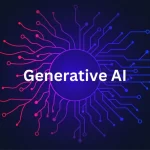
Reinforcement Learning (RL) in Science and Biology: Advancing Complex Decision-Making
February 15, 2024Introduction to Reinforcement Learning (RL)
Definition and Basics of RL:
- Reinforcement Learning (RL) is a type of machine learning paradigm where an agent learns to make decisions by interacting with an environment.
- The agent receives feedback in the form of rewards or penalties based on its actions, and its goal is to learn a policy that maximizes cumulative rewards over time.
Overview of RL Agents and Environments:
- In RL, the agent is the learner or decision-maker that interacts with the environment.
- The environment is the external system with which the agent interacts and from which it receives feedback.
- The agent takes actions based on its current state and receives feedback from the environment, which affects its future states.
Importance of RL in Learning Complex Decision-Making Tasks:
- RL is particularly useful for learning in complex, dynamic environments where the consequences of actions are not immediately apparent.
- It has been successfully applied in a wide range of domains, including robotics, game playing, and resource management, where traditional algorithms struggle to perform effectively.
Key Concepts in RL
Markov Decision Process (MDP) and Bellman Equation:
- MDP is a mathematical framework used to model decision-making processes where outcomes are partially random and partially under the control of a decision-maker.
- The Bellman equation is a fundamental equation in dynamic programming and RL that expresses the value of a state in terms of the immediate reward and the value of the next state.
Policy, Value Functions, and Q-Learning:
- A policy in RL is a strategy that the agent uses to determine its actions based on the current state.
- Value functions estimate the expected return (cumulative reward) that an agent can achieve from a given state or state-action pair under a specific policy.
- Q-learning is a model-free RL algorithm for learning the optimal policy in a MDP by estimating the action-value function.
Exploration vs. Exploitation Trade-off:
- Exploration involves selecting actions to gain more information about the environment and improve the agent’s policy.
- Exploitation involves selecting actions that the agent believes will lead to the highest immediate reward based on its current knowledge.
- Balancing exploration and exploitation is a key challenge in RL, as the agent must explore enough to discover optimal strategies while exploiting known strategies to maximize rewards.
Applications of RL in Science and Biology
- RL can be used to optimize drug design and screening processes by guiding the selection of candidate compounds and predicting their interactions with biological targets.
- It can also be used to optimize the parameters of drug delivery systems to improve efficacy and minimize side effects.
- In bioinformatics, RL can be applied to protein folding and structure prediction, which are complex computational problems with significant implications for drug design and understanding biological processes.
- RL can also be used for sequence analysis, gene expression analysis, and other tasks in genomics and molecular biology.
Ecology:
- RL can help model ecosystem dynamics and species interactions, providing insights into complex ecological systems and aiding in conservation efforts.
- It can also be used to optimize resource management strategies in agriculture and environmental conservation.
These applications demonstrate the versatility and potential of RL in advancing scientific research and understanding complex biological systems.
Deep Reinforcement Learning
Deep Q-Networks (DQN) for Learning from High-Dimensional Inputs:
- DQN is a deep learning-based RL algorithm that uses a deep neural network to approximate the Q-function in Q-learning.
- It has been successful in learning from high-dimensional inputs, such as images, by using convolutional neural networks to process raw pixel inputs.
Policy Gradient Methods for Learning Continuous Action Spaces:
- Policy gradient methods are a class of RL algorithms that directly learn the policy function, which maps states to actions, without explicitly computing the Q-values.
- These methods are well-suited for learning in continuous action spaces, where traditional Q-learning approaches are not applicable.
Applications of Deep RL in Game Playing and Robotics
- Deep RL has been successfully applied to game playing, such as in the case of AlphaGo, which used deep reinforcement learning to defeat human champions in the game of Go.
- In robotics, deep RL is used for tasks such as robot manipulation, locomotion, and navigation, where agents must learn complex behaviors from high-dimensional sensory inputs.
These advancements highlight the capability of Deep RL to handle complex tasks in challenging environments, making it a valuable tool in various domains, including game playing and robotics.
Multi-Agent RL
Cooperative and Competitive Multi-Agent Environments:
- In cooperative multi-agent environments, agents work together to achieve a common goal, requiring coordination and collaboration.
- In competitive environments, agents compete against each other, leading to strategic decision-making and adversarial interactions.
Coordination and Communication Strategies in Multi-Agent Systems:
- Coordination strategies involve agents working together to achieve a common goal, often requiring communication and collaboration.
- Communication strategies in multi-agent systems can include explicit communication between agents, implicit communication through actions, or learning communication protocols.
Applications in Population Biology and Social Dynamics:
- In population biology, multi-agent RL can be used to model interactions between individuals in a population, such as predator-prey dynamics or competition for resources.
- In social dynamics, multi-agent RL can be applied to study the emergence of social norms, cooperation, and conflict resolution in human societies.
These applications demonstrate the versatility and potential of multi-agent RL in modeling complex systems and understanding emergent behaviors in populations and social groups.
Challenges and Considerations in Reinforcement Learning (RL)
Sample Efficiency and Exploration Strategies in RL:
- RL algorithms often require a large number of interactions with the environment to learn an optimal policy, which can be time-consuming and costly in real-world applications.
- Exploration strategies, such as epsilon-greedy and Thompson sampling, are used to balance the exploration of new actions with the exploitation of known actions to improve learning efficiency.
Reward Design and Function Approximation:
- Designing reward functions that effectively capture the desired behavior of an RL agent is a challenging task, as poorly designed rewards can lead to suboptimal or unintended behavior.
- Function approximation is used to estimate value functions or policies in RL, and choosing the appropriate function approximation method can impact the performance and stability of RL algorithms.
Ethical and Safety Implications of RL in Real-World Applications
- RL algorithms have the potential to impact society in profound ways, raising ethical concerns related to fairness, accountability, and transparency.
- Safety is a critical consideration in RL, especially in applications where RL agents interact with physical systems or make decisions that affect human lives.
Addressing these challenges and considerations is crucial for the responsible development and deployment of RL algorithms in real-world applications.


















